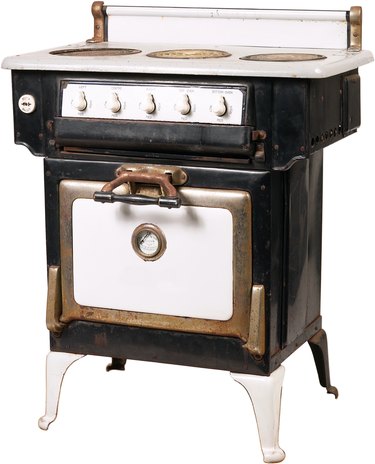
The flue collar is a small but essential part of a heating appliance. Usually associated with heaters and stoves, the flue collar is the metal ring or opening where the vent piping attaches to the chimney. It is important to understand the size of your appliance's flue collar when purchasing and connecting the vent piping, as building codes require the two parts to fit.
Appliance Flue Collars
Video of the Day
The stove flue collar is the round, metal opening designed for connecting vent piping. Any appliance that requires venting, including stoves and heaters, has a flue collar where gases and smoke leave the appliance and enter the chimney flue. It is usually composed of metal and may appear on the top or on the back of the stove. Some flue collars are designed to connect chimney inserts for stoves to the chimney.
Video of the Day
Size Requirements
It is essential that you select vent pipes that fit your flue collar, according to building codes. The appliance vent piping cannot be smaller than the flue collar, or the release of dangerous gases and debris could result. The piping cannot be more than three times its size. The stove works best if the vent piping and collar are a close fit, so you should measure the collar carefully before purchasing piping.
Installation
The position of the flue collar affects the design of your venting system. For example, if the flue collar is on the back of the appliance, you may need elbow joints if you are connecting to a chimney on the roof. Connect the vent pipes to the flue collar with sheet metal screws. Avoid using more than two 90-degree bends as you are extending the vent piping. If you are installing a draft hood, it should be installed at the flue collar.
Safety
It is essential to make a strong connection between the piping and flue collar. Stove cement or other adhesive can be helpful. If you are placing a stove directly in a fireplace, you will connect an adapter or connector pipe from the flue collar all the way to the top of the chimney. Aim to extend the flue so it reaches at least 12 to 14 feet above the flue collar.